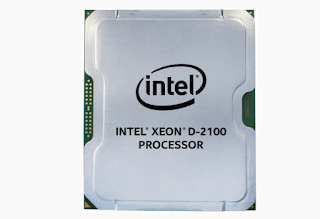Telefónica and Huawei are running a Proof-of-Concept (PoC) testbed for 5G based vehicle communication networks (known as 5G-V2X) in their 5G Joint Innovation Lab at Madrid.
 The 5G-V2X test is based on the latest 5G NR specs and includes advanced services such as vehicles platooning, extended sensors, advanced driving and remote driving, among others.
The 5G-V2X test is based on the latest 5G NR specs and includes advanced services such as vehicles platooning, extended sensors, advanced driving and remote driving, among others.
The so-called Ultra-Reliable and Low-Latency Communication (URLLC) mode for 5G NR offers the flexible design to support services with low latency and high-reliability requirements.
Huawei said the PoC demonstrates that URLLC can effectively support V2X with higher system capacity and better coverage. The exercise achieved 99.999% reliability with a low latency of 1ms required for autonomous driving in a typical macro cellular outdoor environment, such as dense urban, suburban and rural areas. In the 5G-V2X PoC, a novel self-contained frame structure for radio transmission was used, both from the base station to the vehicle and from the vehicle to another vehicle. This allows much faster transmission feedback, enabling very low-latency communications. The great flexibility of the NR system framework allows the support of some advanced features, like Polar coding for small V2X packet error correction, an optimized HARQ (Hybrid Automatic Repeat Request) procedure for increased transmission reliability, or an ‘Inactive State’ for instantly sending short packets to control the car maneuver. To further enhance performance, another key technology, ‘SCMA-based (Sparse Coded Multiple Access) Grant Free Access, was tested.
Mr. Enrique Blanco, Telefónica Global CTIO, said: “This PoC between Telefónica and Huawei is another step towards 5G commercialization and a fully connected society. We will strengthen our collaboration by verifying 5G key technologies. Multiple novel use cases will be developed and provided to our customers.”
Dr. Wen Tong, Huawei Fellow and Huawei Wireless CTO, said: “We are pleased with our further collaboration with Telefónica in 5G technologies. The 5G-V2X PoC is another joint effort to pave the way for commercialization of 5G and lay a solid foundation to realize the 5G vision of enabling cooperative autonomous driving.”
 The 5G-V2X test is based on the latest 5G NR specs and includes advanced services such as vehicles platooning, extended sensors, advanced driving and remote driving, among others.
The 5G-V2X test is based on the latest 5G NR specs and includes advanced services such as vehicles platooning, extended sensors, advanced driving and remote driving, among others.The so-called Ultra-Reliable and Low-Latency Communication (URLLC) mode for 5G NR offers the flexible design to support services with low latency and high-reliability requirements.
Huawei said the PoC demonstrates that URLLC can effectively support V2X with higher system capacity and better coverage. The exercise achieved 99.999% reliability with a low latency of 1ms required for autonomous driving in a typical macro cellular outdoor environment, such as dense urban, suburban and rural areas. In the 5G-V2X PoC, a novel self-contained frame structure for radio transmission was used, both from the base station to the vehicle and from the vehicle to another vehicle. This allows much faster transmission feedback, enabling very low-latency communications. The great flexibility of the NR system framework allows the support of some advanced features, like Polar coding for small V2X packet error correction, an optimized HARQ (Hybrid Automatic Repeat Request) procedure for increased transmission reliability, or an ‘Inactive State’ for instantly sending short packets to control the car maneuver. To further enhance performance, another key technology, ‘SCMA-based (Sparse Coded Multiple Access) Grant Free Access, was tested.
Mr. Enrique Blanco, Telefónica Global CTIO, said: “This PoC between Telefónica and Huawei is another step towards 5G commercialization and a fully connected society. We will strengthen our collaboration by verifying 5G key technologies. Multiple novel use cases will be developed and provided to our customers.”
Dr. Wen Tong, Huawei Fellow and Huawei Wireless CTO, said: “We are pleased with our further collaboration with Telefónica in 5G technologies. The 5G-V2X PoC is another joint effort to pave the way for commercialization of 5G and lay a solid foundation to realize the 5G vision of enabling cooperative autonomous driving.”



















